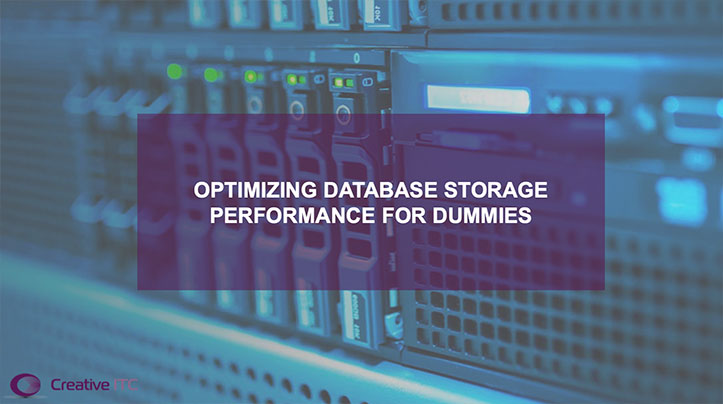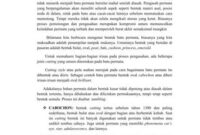Optimizing data storage costs is a crucial aspect of managing IT infrastructure, as it directly impacts the bottom line. This article delves into effective strategies for reducing storage expenses without compromising data integrity, ensuring optimal efficiency and cost-effectiveness.
With the increasing volume of data generated in today’s digital world, organizations are facing mounting pressure to manage storage costs. Implementing data storage optimization techniques can significantly reduce expenses while maintaining data accessibility and security.
Data Storage Cost Optimization Strategies: Optimizing Data Storage Costs

Optimizing data storage costs is crucial for businesses looking to reduce operational expenses and enhance efficiency. Implementing cost-saving techniques can significantly impact the bottom line without compromising data integrity.
Here are some strategies to optimize data storage costs:
Tiered Storage
Tiered storage involves categorizing data based on its importance and frequency of access. Frequently accessed data is stored on faster, more expensive storage devices,
while less frequently accessed data is stored on slower, less expensive devices. This approach optimizes storage costs by allocating resources efficiently.
Data Deduplication
Data deduplication identifies and eliminates duplicate copies of data, reducing storage requirements. This technique is particularly effective for large datasets with redundant information, such as backups and archives.
Compression
Data compression reduces the size of data by removing redundant or unnecessary information. Compression algorithms can significantly reduce storage space requirements, especially for text-based data and images.
Data Storage Tiering and Archiving
Data storage tiering is a strategy for optimizing storage costs by placing data on different storage tiers based on its importance and access frequency.
Data that is frequently accessed is stored on faster, more expensive storage tiers, while less frequently accessed data is stored on slower, less expensive tiers.
Data tiering can be implemented using a variety of technologies, including storage virtualization, cloud storage, and object storage.
Storage virtualization allows you to pool storage resources from different physical devices and create virtual storage tiers. Cloud storage provides a scalable and cost-effective way to store data off-site. Object storage is a type of cloud storage that is designed for storing large amounts of unstructured data.
Data Archiving
Data archiving is the process of moving data from active storage to a less expensive, long-term storage tier. Data that is archived is typically data that is no longer frequently accessed. Archiving data can help to reduce storage costs and improve performance by freeing up space on active storage tiers.
Data Compression and Deduplication
Data compression and deduplication are two techniques that can be used to reduce the storage requirements of data. Data compression works by removing redundant information from data, while deduplication works by identifying and eliminating duplicate copies of data.
Data compression can be lossless or lossy. Lossless compression does not remove any information from the data, but it can only achieve a limited amount of compression.
Lossy compression removes some information from the data, but it can achieve a higher degree of compression. The amount of compression that can be achieved depends on the type of data being compressed.
Deduplication works by identifying and eliminating duplicate copies of data. This can be done at the block level or at the file level. Block-level deduplication identifies and eliminates duplicate blocks of data, while file-level deduplication identifies and eliminates duplicate files.
Data compression and deduplication can be used together to achieve even greater storage savings. For example, data can be first compressed and then deduplicated. This can result in a significant reduction in storage requirements.
Benefits of Data Compression and Deduplication
- Reduced storage requirements
- Improved performance
- Reduced costs
Trade-offs of Data Compression and Deduplication, Optimizing data storage costs
There are some trade-offs to consider when using data compression and deduplication. These include:
- Increased processing overhead
- Reduced data integrity
- Increased complexity
Overall, data compression and deduplication can be effective techniques for reducing the storage requirements of data. However, it is important to consider the trade-offs involved before implementing these techniques.
Cloud Storage Cost Optimization

Cloud storage has become an essential part of modern IT infrastructure, providing businesses with scalable, reliable, and cost-effective storage solutions. However, managing cloud storage costs effectively is crucial to avoid unexpected expenses and optimize IT budgets.
Different cloud storage providers offer varying cost models, including pay-as-you-go, tiered pricing, and flat-rate options. It’s essential to compare these models and choose the one that aligns with your specific usage patterns and budget constraints.
Cost Optimization Strategies
Optimizing cloud storage costs involves implementing various strategies, including:
- Using spot instances: Spot instances offer significant cost savings compared to on-demand instances, but they come with the risk of being terminated when demand increases. For non-critical workloads that can tolerate interruptions, spot instances can be a cost-effective option.
- Reserved instances: Reserved instances provide a fixed price for cloud storage over a specified period, typically one or three years. They offer a significant discount compared to on-demand instances, but require a longer-term commitment.
- Data lifecycle management: Implementing data lifecycle management policies ensures that data is stored in the most cost-effective tier based on its age and importance. This involves moving inactive data to lower-cost storage tiers or archiving it to reduce storage costs.
Benefits of Cloud Storage for Cost Optimization
Cloud storage offers several benefits for cost optimization, including:
- Scalability: Cloud storage can be scaled up or down on demand, eliminating the need to invest in excess storage capacity and reducing the risk of overprovisioning.
- Flexibility: Cloud storage provides flexible pricing options and the ability to pay for what you use, allowing businesses to optimize costs based on their actual usage.
- Reliability: Cloud storage providers offer high levels of reliability and redundancy, ensuring data availability and reducing the risk of data loss or downtime.
Final Review
Optimizing data storage costs requires a comprehensive approach that encompasses data tiering, compression, deduplication, cloud storage optimization, data lifecycle management, and data analytics.
By implementing these strategies, organizations can achieve significant cost savings while ensuring data integrity and optimizing storage efficiency. Embracing these techniques is essential for businesses looking to streamline their IT infrastructure and maximize their return on investment.
FAQ Resource
What are the key benefits of optimizing data storage costs?
Optimizing data storage costs offers several key benefits, including reduced IT expenses, improved storage efficiency, enhanced data security, and increased operational agility.
How can data tiering help optimize storage costs?
Data tiering involves classifying data based on its importance and frequency of access, and storing it on different storage tiers with varying costs. This approach optimizes storage utilization and reduces overall storage expenses.
What role does data compression play in storage cost optimization?
Data compression reduces the physical size of data by removing redundant information. This technique can significantly reduce storage requirements and associated costs, especially for large datasets.
How can cloud storage be leveraged to optimize costs?
Cloud storage offers flexible and scalable storage options, allowing organizations to pay only for the storage they use. By leveraging cloud storage, businesses can optimize costs by avoiding overprovisioning and utilizing cost-effective storage tiers.
What is the importance of data lifecycle management in cost optimization?
Data lifecycle management involves implementing policies to manage data throughout its lifecycle, from creation to disposal. By defining rules for data retention, archival, and deletion, organizations can optimize storage utilization and reduce costs associated with storing inactive or obsolete data.



